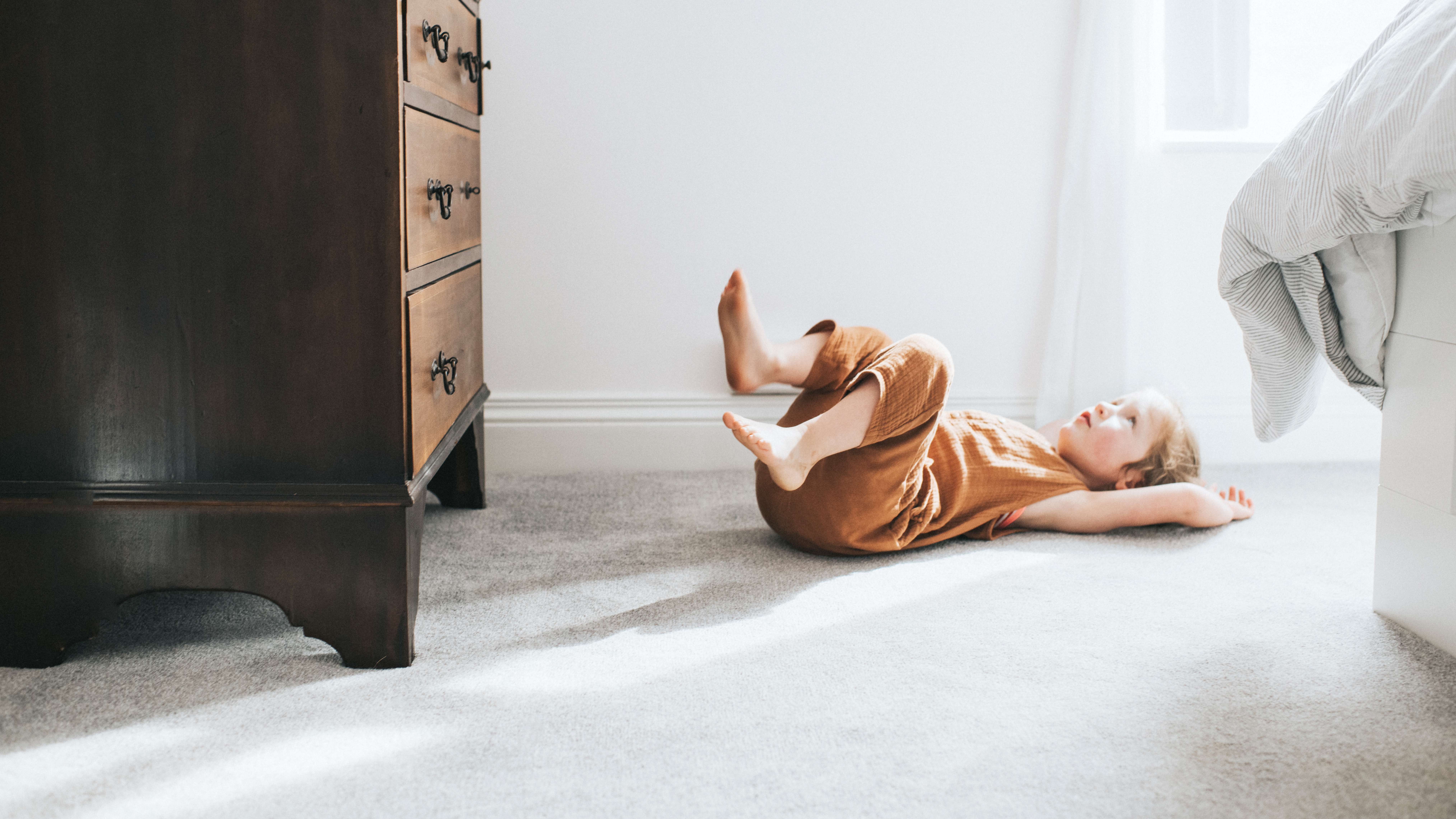
Wish your carpet would dry faster after cleaning? Here’s how to dry carpet after cleaning without the mold, odor, or damage.
Use a mop to make your floors clean enough to eat off of them


When it comes to muddy shoe and paw prints, splatters from pasta night, and the general build-up of grime on your floors, a mop can be your best friend—provided you know how to mop effectively. The truth is: Most of us have likely mopped floors before, but achieving that perfect squeaky clean isn’t always a given. Technique matters, and so does your floor cleaner of choice. Let’s review how to mop and to make your floors shine.
Sweeping and vacuuming your floors beforehand is a crucial step of mopping effectively. Otherwise, you’ll push around sopping dust bunnies and crumbs into every corner.
Grab your broom or a vacuum and clean up the debris on the floor. Be sure to get the areas beneath your cabinets and up against the wall, as these are the main spots dust loves to settle in.

Choosing the right mop is key to keeping your floors clean. The traditional string mop is a tried-and-true classic for good reason, as it makes quick work of dirt, grime, and other build-ups.
Flat microfiber mops are often touted as the best option, but in most cases, they aren’t ideal for a deep clean. Save these for quick, easy touch-ups between mop days. The exception is wood flooring: Flat microfiber mops are a great tool for wood, as these mops will prevent you from using too much water. However, you can also use a string mop on wood flooring, but be sure to wring it out completely to avoid letting excess water pool and potentially warp the hardwood.
Choosing the best mop solution for your floor type is another crucial step in how to mop. Some cleaning solutions can damage certain tiles and finishes, so stock the right materials for your floor type.
Stone: You can use any pH-neutral floor cleaner, but avoid acidic cleaners such as vinegar or lemon juice.
Linoleum: Try commercial linoleum flooring cleaner or Borax detergent mixed with water. You can also use baking soda or rubbing alcohol to remove discoloration where needed.
Laminate: It’s best to use a commercial laminate floor cleaner or a solution of ½ cup vinegar to 1 gallon of water. You should avoid soap-based detergents.
Vinyl: Mix a DIY solution of ½ cup vinegar to 1 gallon of water. For stains, make a paste by mixing baking soda and water.
For cleaning hardwood floors, it’s usually best to stick with a mild non-acidic floor cleaner. Opt for cleaners that are made for wood flooring. Some wood finishes can handle diluted vinegar, but a lot of them may get damaged, so use caution and test a small area if you plan on using vinegar to clean your wooden floor.

Wringing out your mop will keep you from slopping a huge puddle on the floor, which is especially bad news for laminate and wood flooring, as these floor types bubble or warp easily. The manufacturer’s instructions will tell you how to use a mop bucket with a built-in mechanism for wringing it out. Otherwise, wear rubber cleaning gloves, grab the mop head, and wring it out over the bucket by firmly twisting it with your hands. You want a damp mop, not a dripping mop.
Once your mop is ready, start from the far end of the room and work your way out, so you don’t leave any footprints on your freshly mopped floor. Here’s how to mop your floors until they sparkle with the following mop types:
String mop: Use wide figure-8 motions until you’ve covered the whole floor and every crevice.
Sponge mop: Mop in straight lines.
Microfiber mop: Mop in straight lines. For wood floors, work in the direction of the grain.
While mopping, keep an eye out for stubborn spots that don’t go away with the first passing. You can usually tackle these with a few vigorous motions with your mop, but you can also keep a scratch-free scrub sponge or scrub brush handy to use for spot cleaning along the way.

Unless you’re sticking to a small area, it’s crucial to remember to dump and refill your mop bucket with cleaning solution regularly while you’re cleaning. Otherwise, you’ll be mopping the floor with dirty water, likely leaving a grimy film once you’re through. Refresh your mop bucket with fresh water in between passes over the floor.
If you’re still having trouble getting your floors as clean as you’d like them, or if you’re struggling to keep up with this maintenance task, consider hiring a local house cleaning service for extra help. Regular deep cleanings can simplify the mopping process—you’ll likely need a microfiber mop and a quick spray with your chosen cleaner to keep up between appointments.
From average costs to expert advice, get all the answers you need to get your job done.

Wish your carpet would dry faster after cleaning? Here’s how to dry carpet after cleaning without the mold, odor, or damage.

Many homeowners want to know how often they should mop their floors. Depending on the room and household size, it may be more often than you think.

Disinfecting floors means ensuring they’re clean and that you’ve killed any harmful germs left on the surface. Learn how to disinfect hardwood floors in a few simple steps.

If your carpet is looking worse for wear, it is a good idea to hire a pro. This guide will help you look out for common carpet cleaning scams.

Don’t stress about dog urine (and the smell) ruining hardwood floors. Read about different DIY and natural methods for removing pet urine from hardwood floors.

Learn when and why a steam mop vs. a regular mop is better for keeping your flooring squeaky clean and sanitary with this comparison guide.